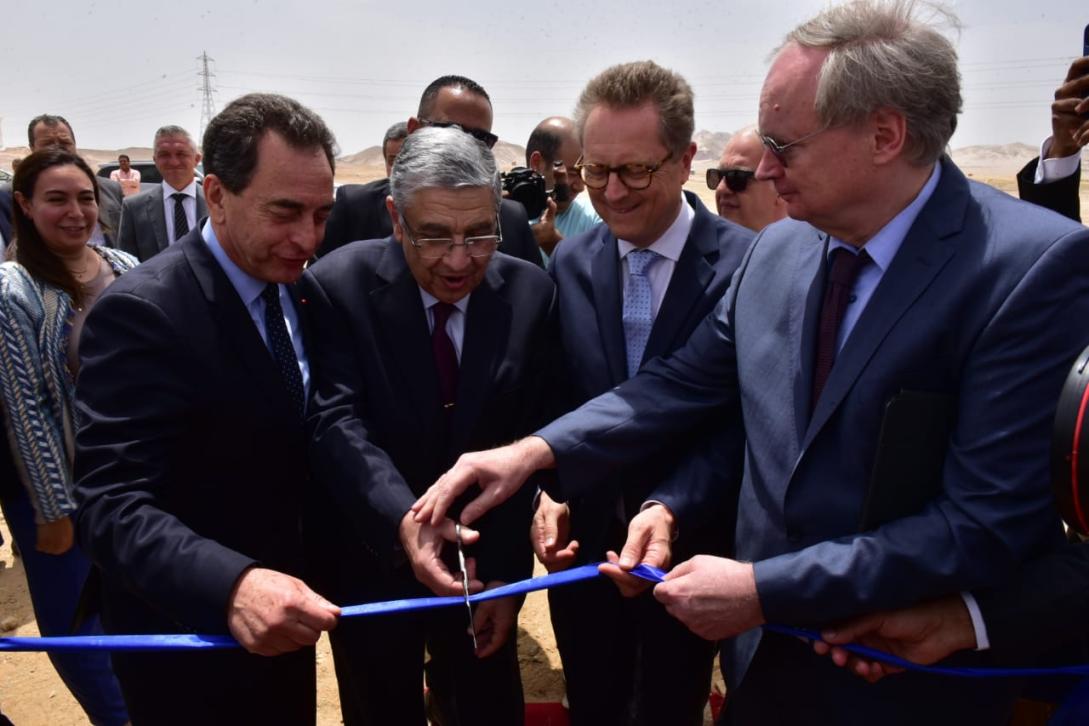Inauguration of the Gulf of Suez Windfarm project

Inauguration of the Gulf of Suez Windfarm project
28 May 2024
Gulf of Suez Windfarm – Red Sea
Remarks by
Ambassador Christian Berger,
Head of the EU Delegation to Egypt
Dear Minister Shaker, Excellencies, Colleagues, Ladies and Gentlemen, dear Team Europe
I would like to thank the Ministry of Electricity and Renewable Energy for its pioneering role in promoting green energy in Egypt. A sustainable clean transition will provide everyone not just with an abundance of affordable clean energy, but also with energy security.
Today is a day of celebration. With the inauguration of the Gulf of Suez Windfarm, Egypt is taking another important step to limit global warming in accordance with its own Nationally Determined Contributions (NDCs). Reaching this goal starts with transforming the energy sector.
This new wind farm has a capacity of 252 MW and supplies power to 370,000 people. In addition, savings of roughly 500,000 tonnes of CO2 will be made. The wind farm makes a material contribution to the Egyptian renewable energy expansion plan, according to which more than 60% percent of Egyptian electricity generating capacity should come from renewable energies by 2040. In response to the fact that the project is located at the edge of a major bird migration route, extensive measures have been taken to protect the migrating birds.
![ Inauguration of the Gulf of Suez Windfarm project EU [Click and drag to move] ](/sites/default/files/styles/full_content_width/public/media/2024/WhatsApp%20Image%202024-05-28%20at%201.27.05%20PM.jpeg?itok=vTWYr8ue)
EU
The Team Europe financiers are the European Investment Bank (EIB), Agence Française de Développement (AfD), the European Commission and KfW on behalf of the Federal Ministry for Economic Cooperation and Development (BMZ). The total costs of the wind farm including the associated infrastructure amount to €257 million. KfW, the lead co-financier, provided €59 million in loans to this project, the EIB is participating with a €94 million loan, AfD with €40 million and the European Commission with a grant of €30 million.
Energy accounts for 75% of the global greenhouse gas emissions. This has to go down. We must roll out more renewables, and we must use less energy to produce the products and services we consume.
This is the reason why, end of last year, the EU launched the idea of global targets on renewable energy and energy efficiency. It looked like a long shot, an almost impossible gamble. We all believed that we had to give it a try. More than 130 countries signed up to the Global Pledge to double global energy efficiency; and to triple renewable energy capacity, to at least 11 terawatts.
This is a message of hope that we can keep the lights on without polluting the air! We need clean energy that is affordable and accessible to all. Therefore, we set the goal to double energy efficiency by 2030. And the world's cheapest energy source are renewables. The goal is to triple renewables by 2030. Solar energy, for instance, is today ten times cheaper than ten years ago.
The EU aims to further unlock the necessary financial support for countries that need it. In the next two years the European Union will invest €2.3 billion to support this energy transition in our neighbourhood and around the globe for affordable and home-grown energy.
The EU is pleased to support Egypt in updating its Energy Strategy 2040, which includes bald scenarios in terms of the share of Renewable Energy in the Egyptian energy mix.
The interplay between renewable growth, transmission expansion and energy distribution underscores the intricate and multifaceted nature of the journey toward a clean and sustainable energy future.
In the framework of NWFE, the EU will provide a grant of €35 million to connect the renewable energy produced here in this region, the Gulf of Suez, to the national grid. These funds will be blended with a loan from EBRD amounting to €160 million. We hope to sign this agreement during the upcoming investment conference.
In addition, digitalisation has an impact right across the energy value chain, from generation to transport, distribution, supply and consumption. For this reason, the EU has agreed to blend €10 million in grants with a €50 million loan from the French Development Agency to upgrade the digitalisation of the Alexandria control centre. This project will be signed also during the investment conference. This is in addition to a number of Technical Assistance Programmes designed to support reforms, assess project feasibility as well as implement Egypt’s hydrogen strategy.
I offer my sincere congratulations to everyone here today.
First let me thank the Ministry of Renewable Energy and the New and Renewable Energy Authority for its ambitious plans to decarbonise Egypt which we fully support.
Vestas, the European world’s largest wind turbine manufacturer, responsible for an important portion of the global wind power capacity.
The Consultant, Tractebel, one of the world’s largest engineering players for energy, water and infrastructure project.
Last but not least the team who helped in the implementation of this project, in particular KfW, the lead financing institution, together with my team at the EU Delegation, the European Investment Bank which is providing the largest loan in this project as well as the French Development Agency.
Many thanks for your attention.
